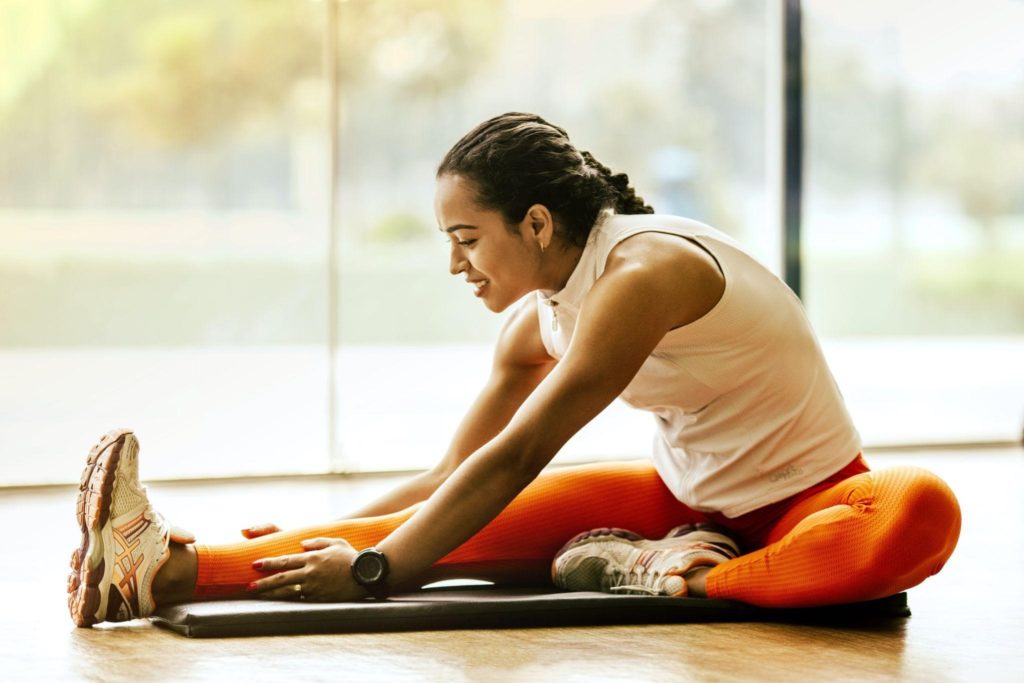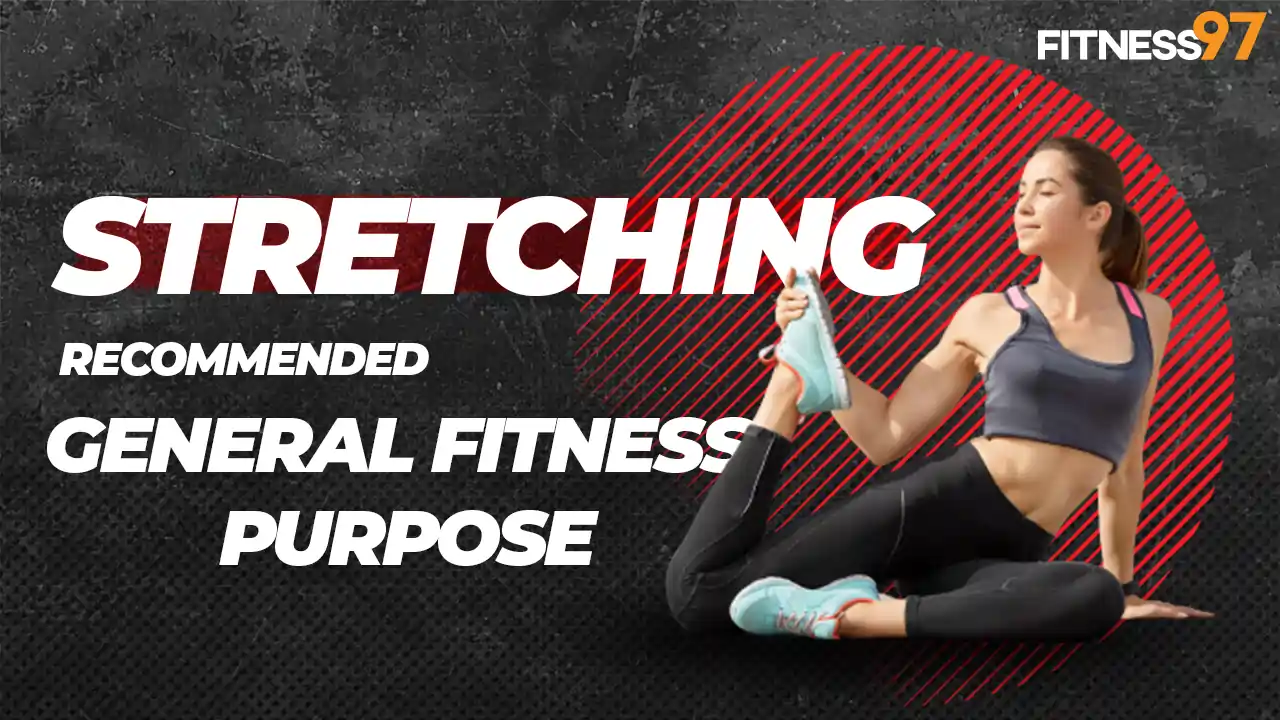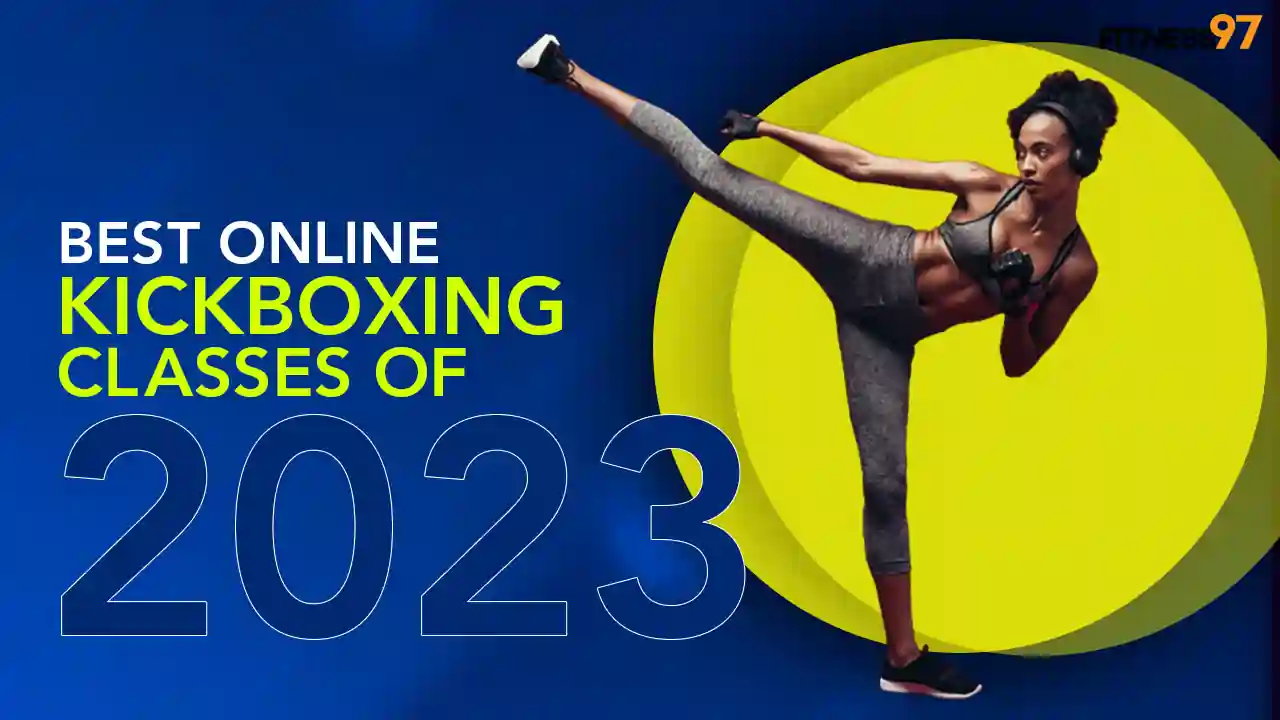If you ask any fitness enthusiast about one thing that one should never skip in their fitness routine, what would it be? Their answer would always be STRETCHING. That’s how much stretching your muscles is important before and after working out. But stretching is not of one type only but has different types. Each type is recommended for different kinds of workout routines. The most common question that tingles people’s minds is what type of stretching they should do for their general fitness goals. Let’s find out the answer to this question.

What Is General Fitness?
The general concept of fitness is maintaining the well-being of both your mind and your body. However, the dynamics of fitness have changed according to fitness goals. But there is still a considerable majority that prefers to follow the idea of general fitness which embodies muscular strength, body composition, muscular endurance, cardiovascular endurance, and flexibility. The idea is to work on all of these five components and keep them in good health.
To maintain this kind of fitness, different exercises and workout routines are followed by people. But the most important step of these workouts is stretching, which is often ignored. That’s why it’s necessary that you educate yourself about why stretching is important. And if you are a follower of the general fitness idea, then what kind of stretching would suit your needs?
Why Is Stretching Important?
We stretch our bodies unknowingly all day like when we get up from sound sleep. We just try to expand our limbs as much as we can to feel relaxed. If we can only do that before and after a workout, it can do wonders. Stretching plays a key role in the success of any workout as it helps in easing the tension you feel in your muscles, which ultimately increases the flexibility of your muscles.
It also helps in reducing soreness, stiffness, pain, aches, and muscle spasms that occur during or after a workout. Moving your body in certain positions can improve the blood flow of the body, thus improving cardiovascular health. And even if you face any muscle injury or tear during a workout, the stretching will make sure that you get healed soon.
How Many Types Of Stretching Are There?
There are three major types of stretching based on the amount of effort they require. These stretching types are designated for different workouts as intense workouts need extra stretching while if you are just doing simple cardio, basic stretching would do the job.
1: Static Stretching
As the name indicates, for this kind of stretching you don’t need to perform complex moves. Rather, you can just place yourself in a comfortable position and can stretch your muscles. During static stretching, you just need to contact and relax your muscles, while their duration shall be around 15-20 seconds if you are a beginner, and if you are a pro then you can try holding your stretch pose for as long as 60 seconds. It is imperative that you never forget to warm up your muscles prior to performing static stretching.
Static stretching has two different types to add variation to it. It includes active stretching and passive stretching. Active stretching is when a person is trying to hold a pose himself while passive stretching is when a person takes help from an object or a person to hold its stretch pose.
2: Dynamic Stretching
This kind of stretching is usually carried out by athletic people. It requires continuous movements of muscles to improve flexibility and mobility. It also helps in conserving the energy as one pose shall be held only for 2-3 seconds. Holding such poses for a long time can cause a bit of muscle tension, resulting in limited muscle movement. That’s why this kind of stretching is followed by athletes so they can prepare their muscles for various sports. The main idea is to mimic the movements of the sport you are about to perform, so those specific muscles get stretched.
3: Ballistic Stretching
To perform ballistic stretching, one needs to use the momentum of the body so it can move beyond the range of motion of the body. The continuous bouncing mechanism followed during this stretching makes your body move like a spring, which is more prone to injuries. That’s why fitness gurus are not so fans of ballistic stretching but they recommend avoiding it. This kind of stretching instead of relaxing muscles can cause muscle tension.
What Type Of Stretching Is The Most Recommended For General Fitness Purposes?
Among all the types of stretching, Static Stretching is the one that has been recommended to people who love to keep up with their general fitness. Because static stretching can relax all of your body muscles and can be done right before any sort of workout. It is easy to perform and provides holistic benefits which focus on increasing the range of motion and flexibility of the muscles.
What Are The Benefits Of Static Stretching?
Stretching is important no matter what type of stretching it is. But for general fitness, static stretching is recommended based on its amazing yet simple benefits, which are:
- It helps in the improvement of sporting performance
- It works on your flexibility
- It helps you get rid of stiff muscles and joints
- It helps you in easing pain and aches
- It improves the overall mobility of the body
The Bottom Line
Among all other types of stretching, static stretching is recommended for general fitness purposes. It is beginner-friendly and serves the purpose of stretching for people at an advanced level of fitness as well. In short, it’s a win-win for everyone. If you need to perform some rigorous sports, then you can always switch to dynamic stretching for better results.

I look up to fitness as a lifestyle and love to pen down about it. I have 2 years of experience in content writing and I am here to share my research and knowledge on health and fitness.













